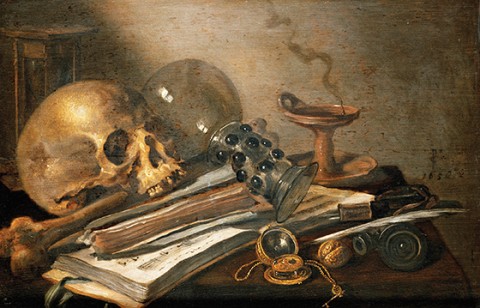Vanitas, by Pieter Claesz (c. 1597–1660)

The vanitas tradition in 17th-century Dutch still-life painting draws inspiration from the Vulgate version of Ecclesiastes 1:2: “Vanitas vanitatum omnia vanitas” [“Vanity of vanities, all is vanity”]. The Latin vanitas means “emptiness” or “futility” and was used to render the Hebrew term hebel, which primarily means “vapor” and refers to that which is fleeting and perishable (Ps. 62:9, 144:4). In this painting, Pieter Claesz, a German-born painter based in Haarlem, depicts human mortality with a skull and bone. The table is cluttered with other items suggesting transience and the futility of human pursuits. Along with an overturned chalice, there is a timepiece, a writer’s quill, and a music manuscript. The smoke is an especially poignant symbol of ephemerality. The impermanence of human existence underscores human dependence on a sovereign and eternal God.



